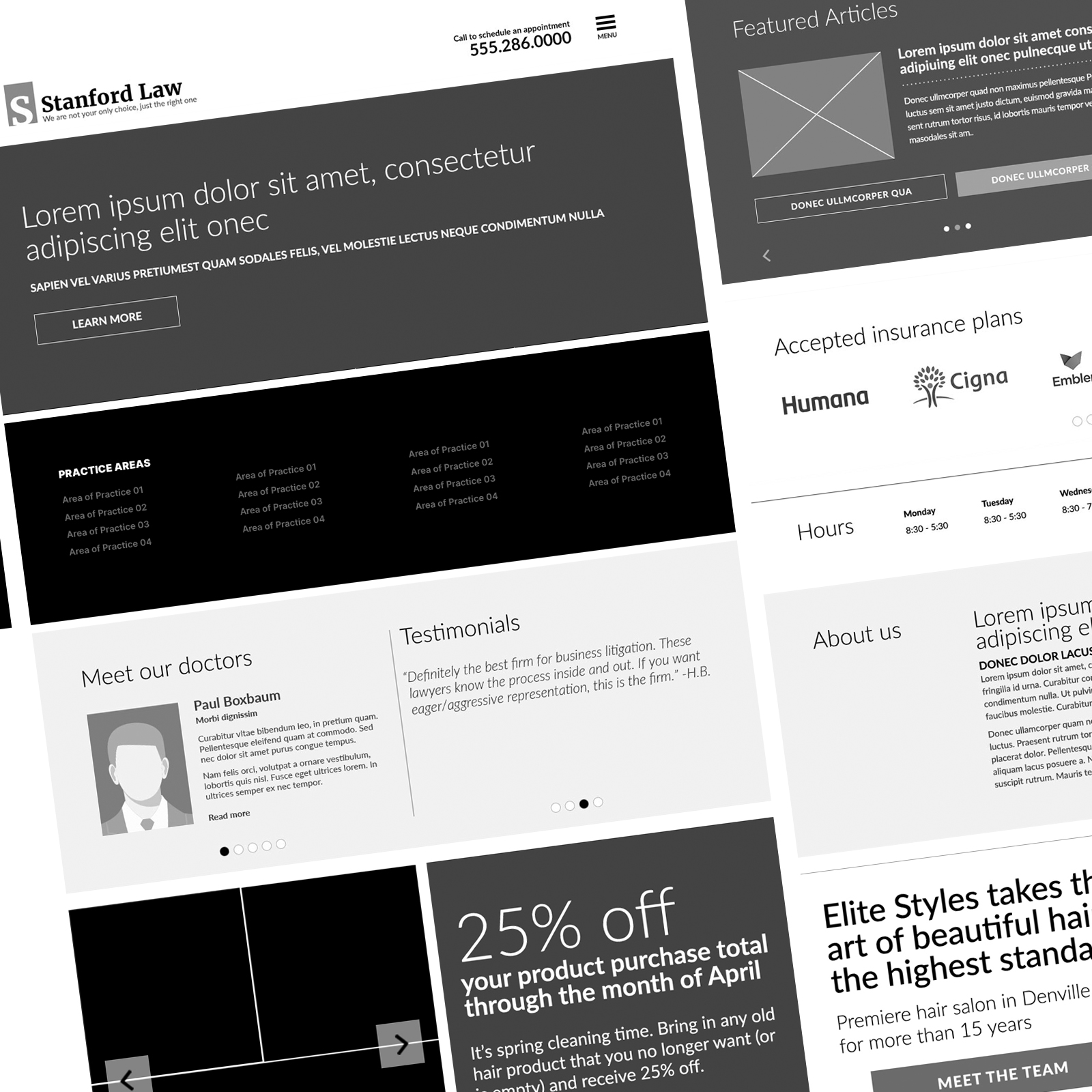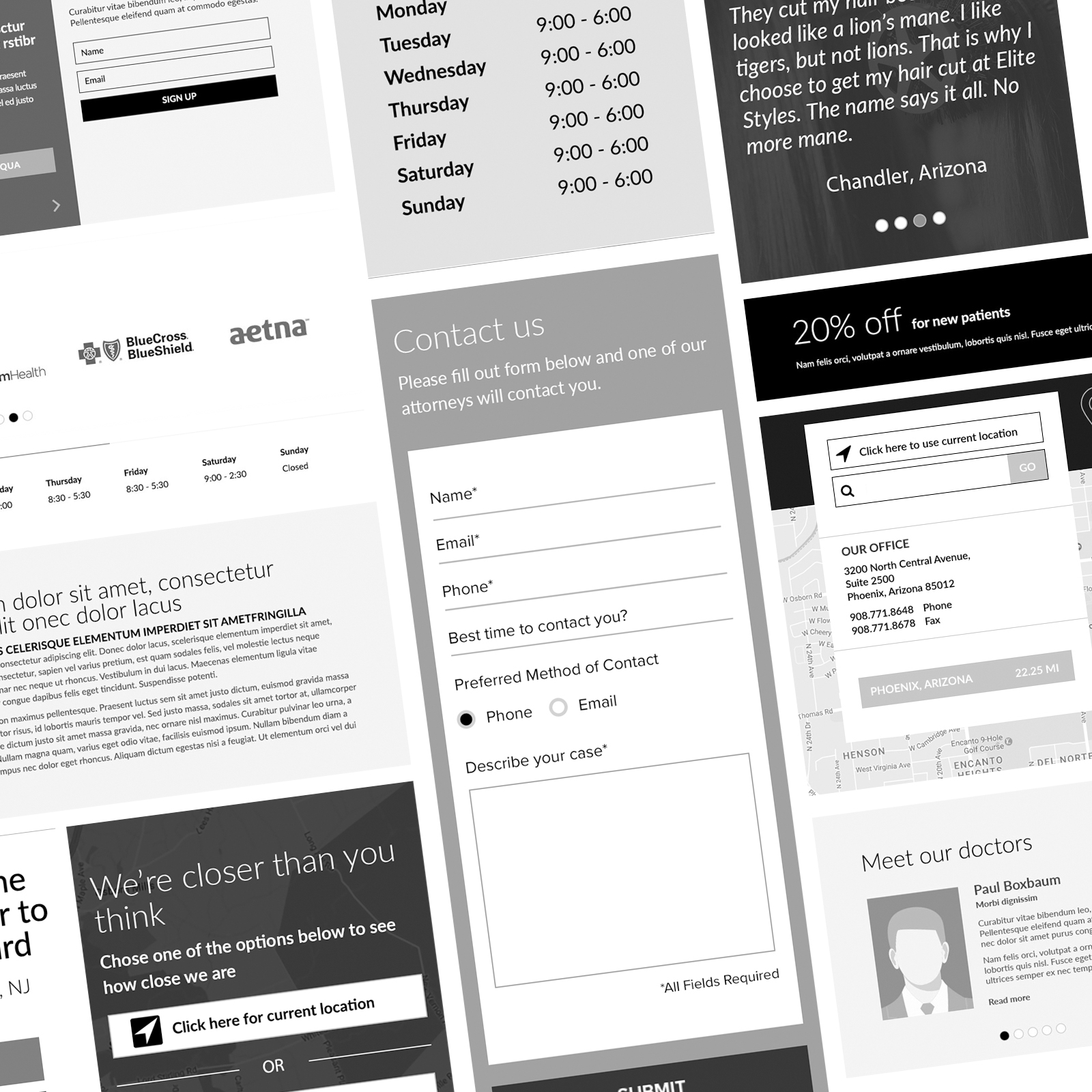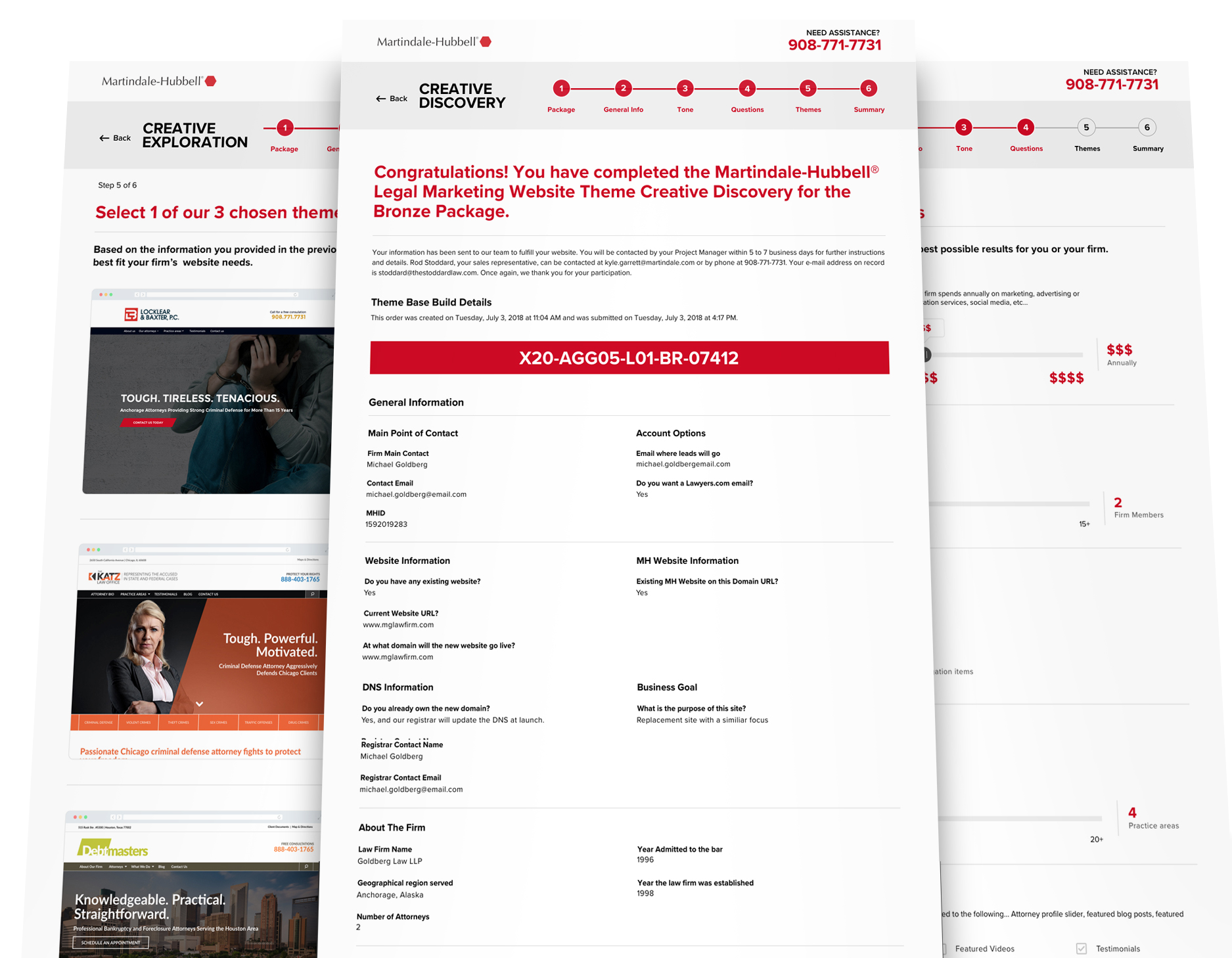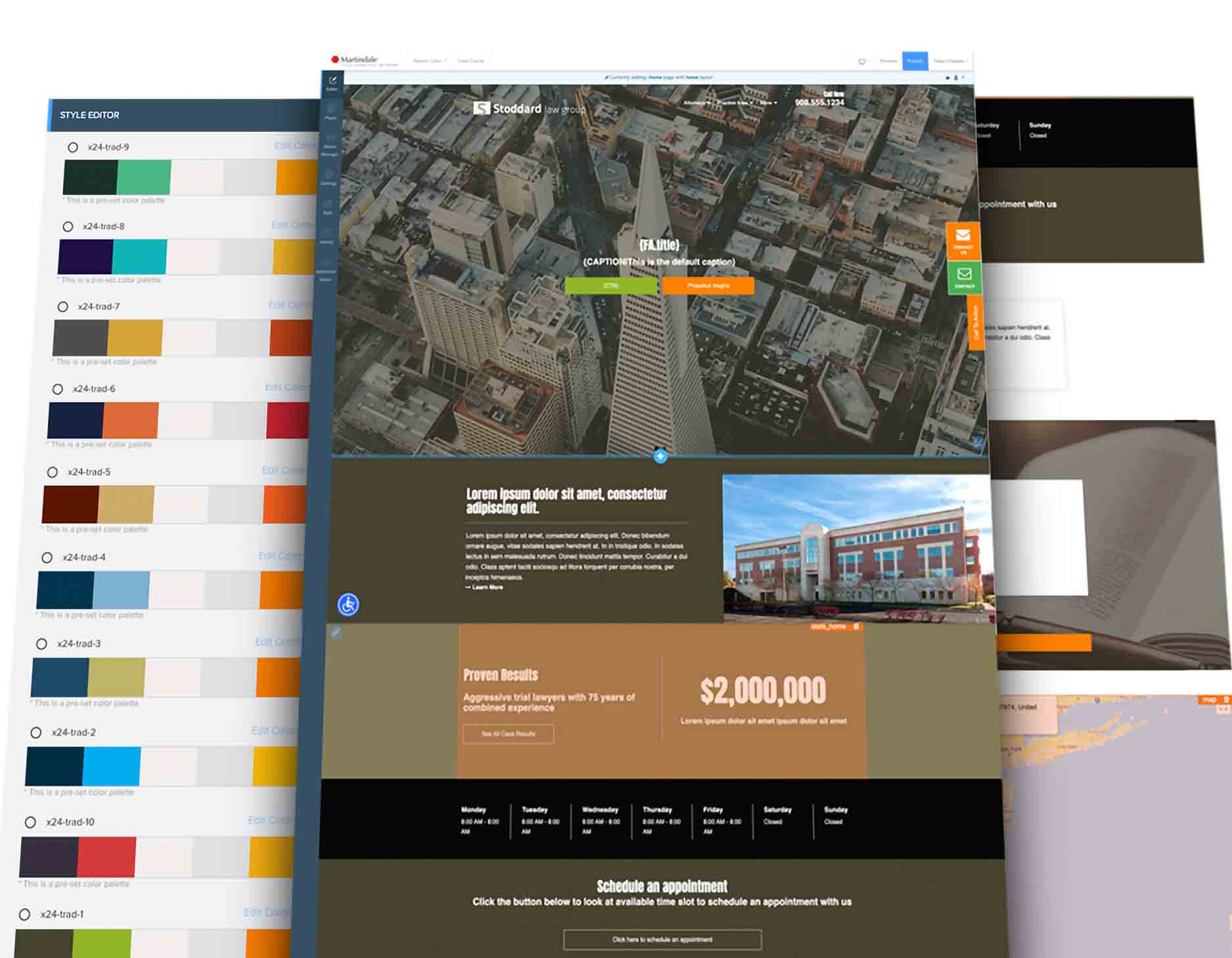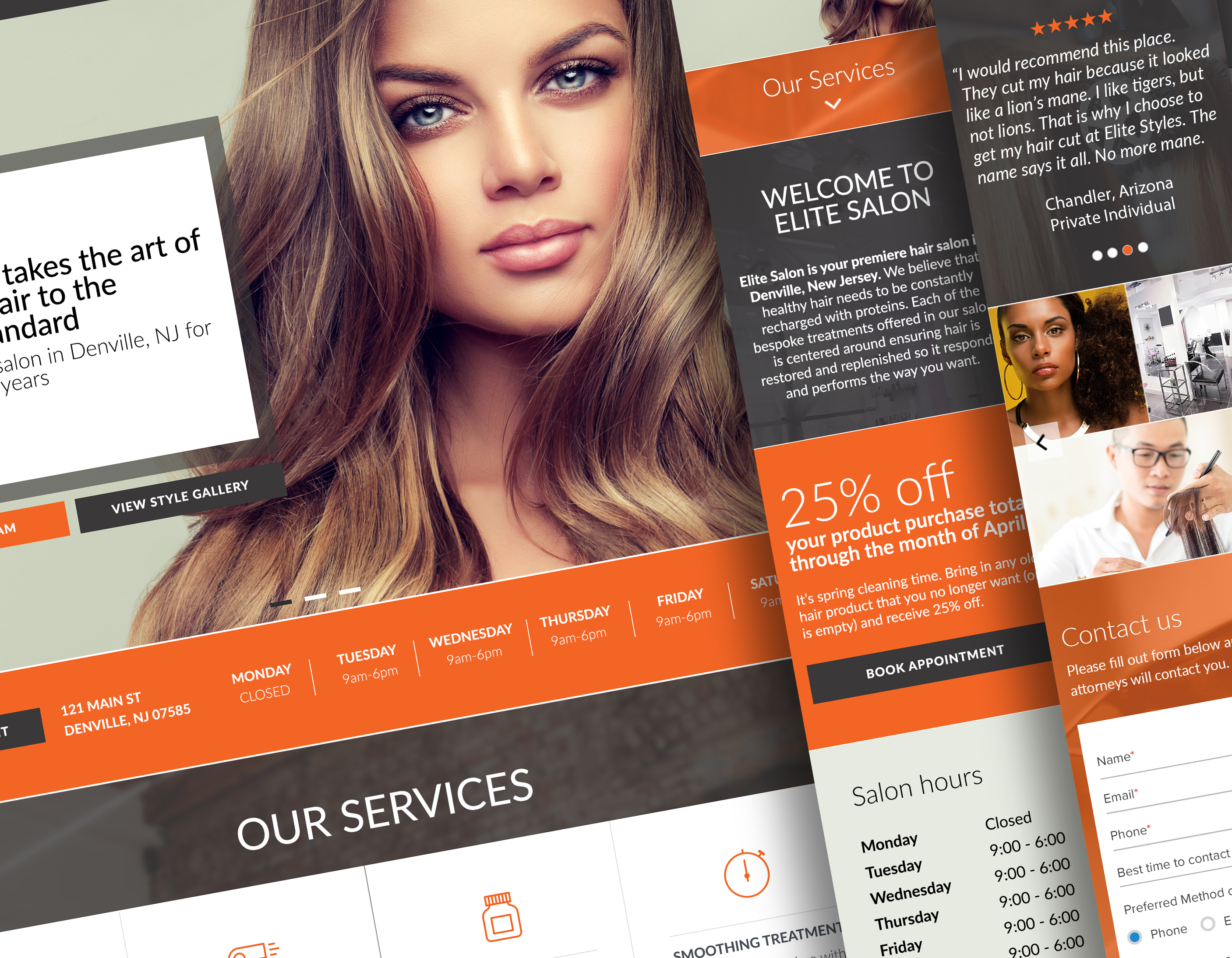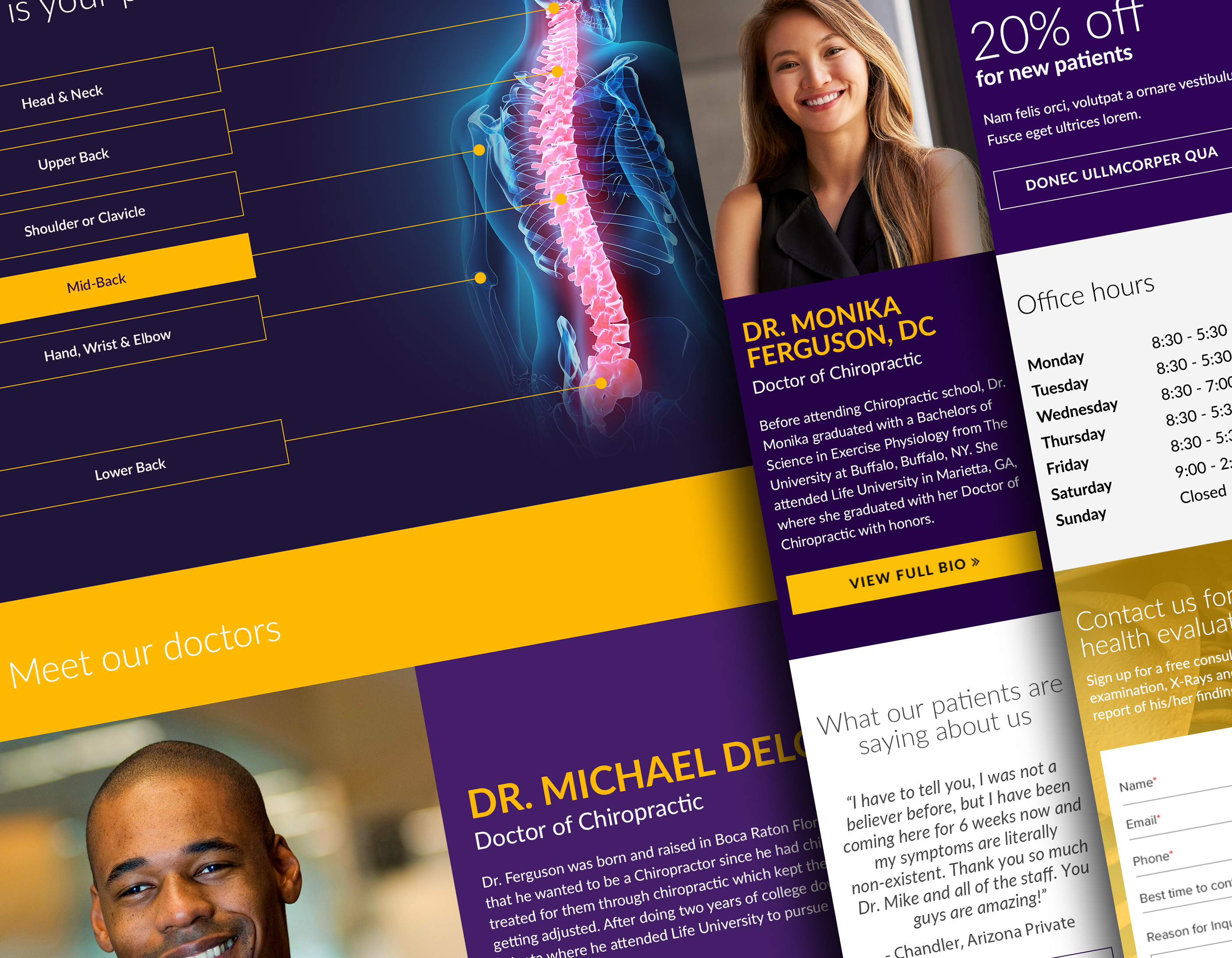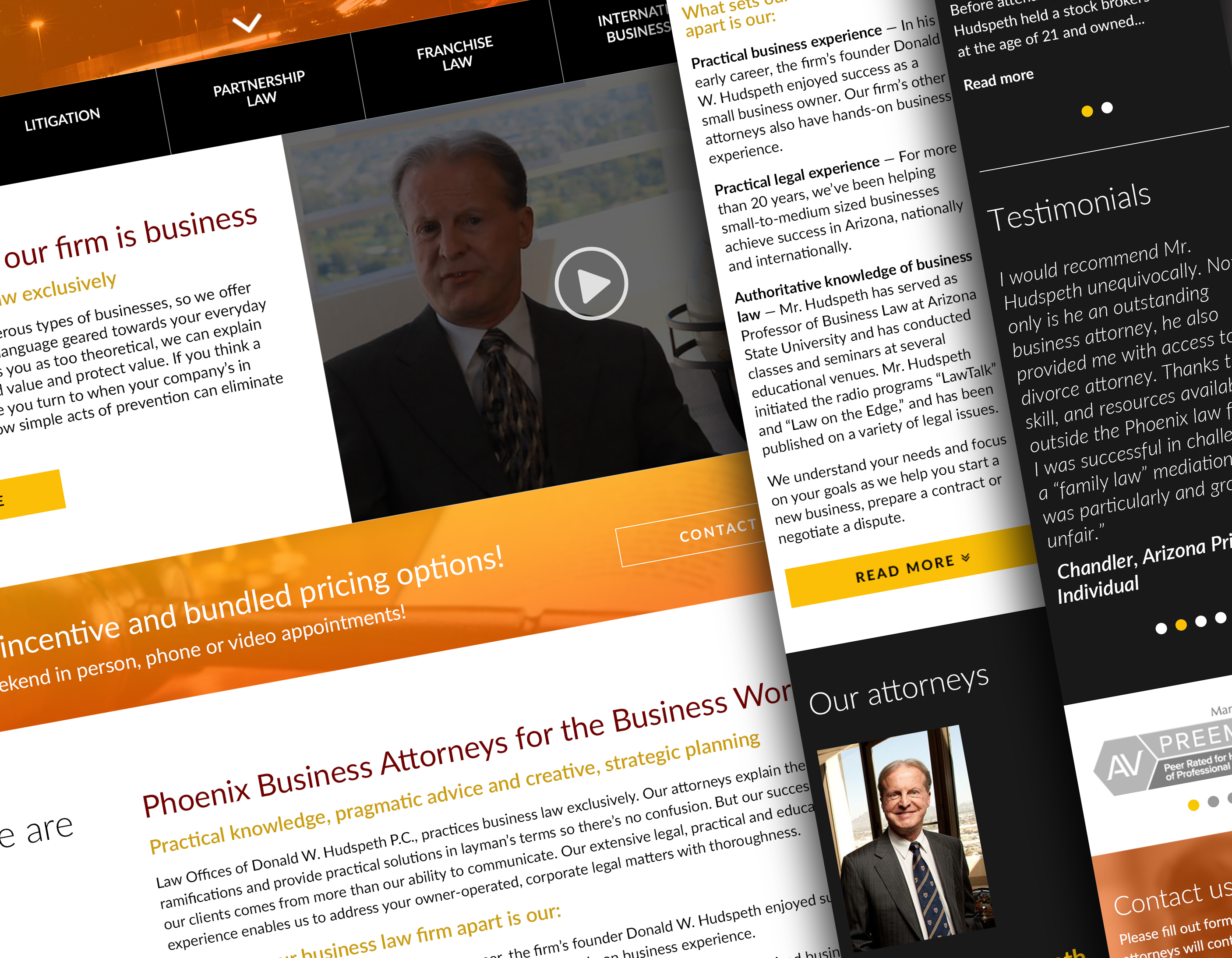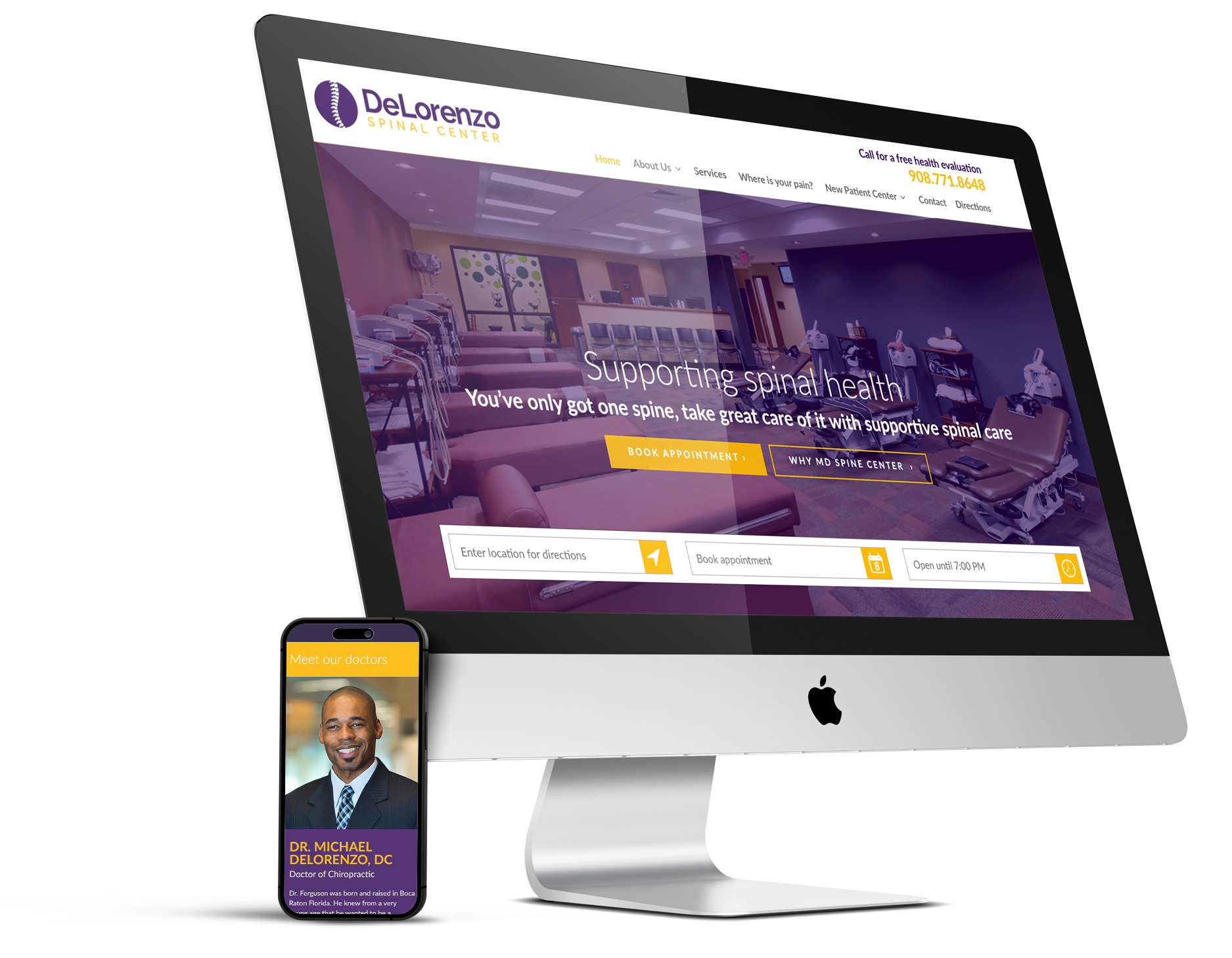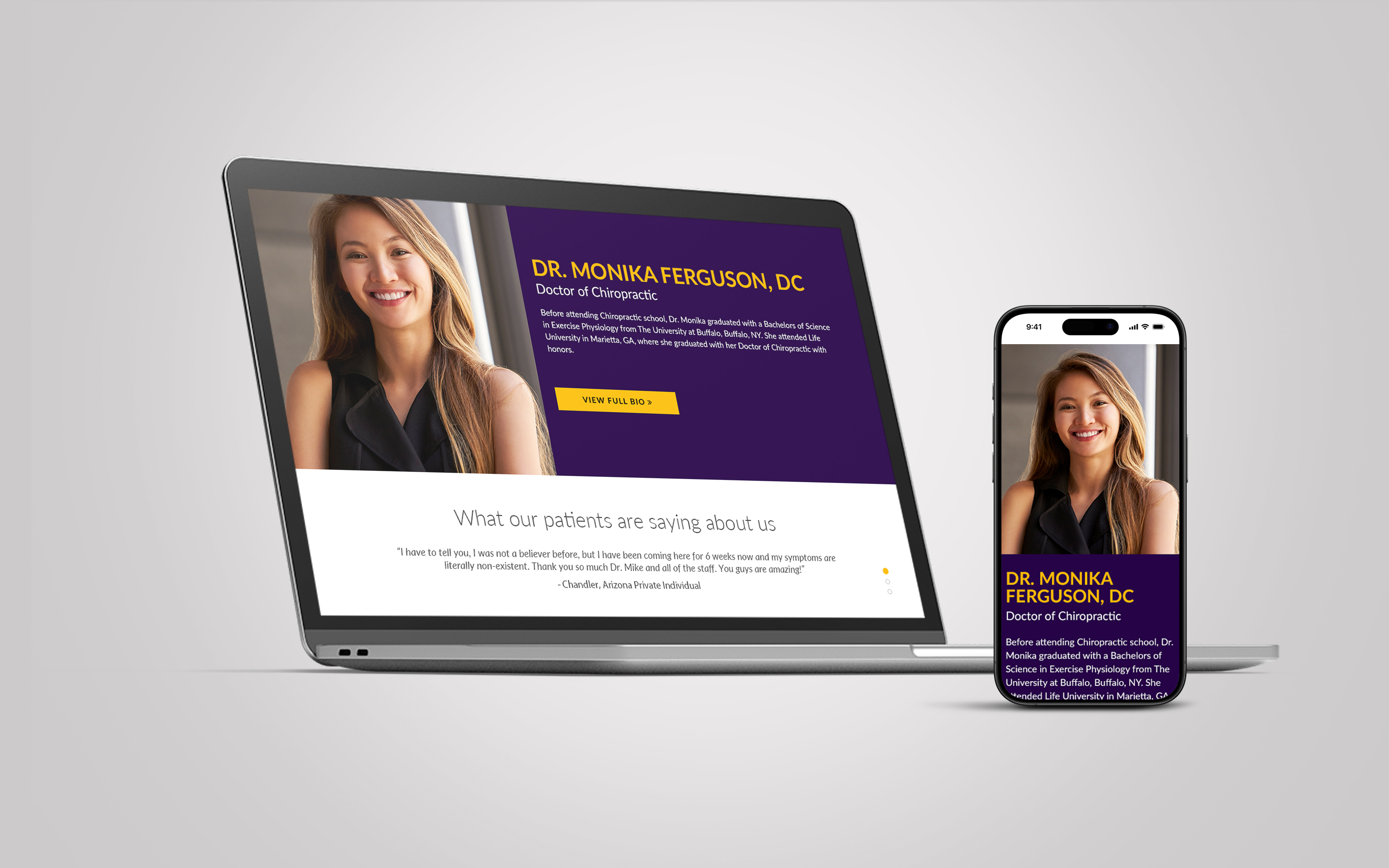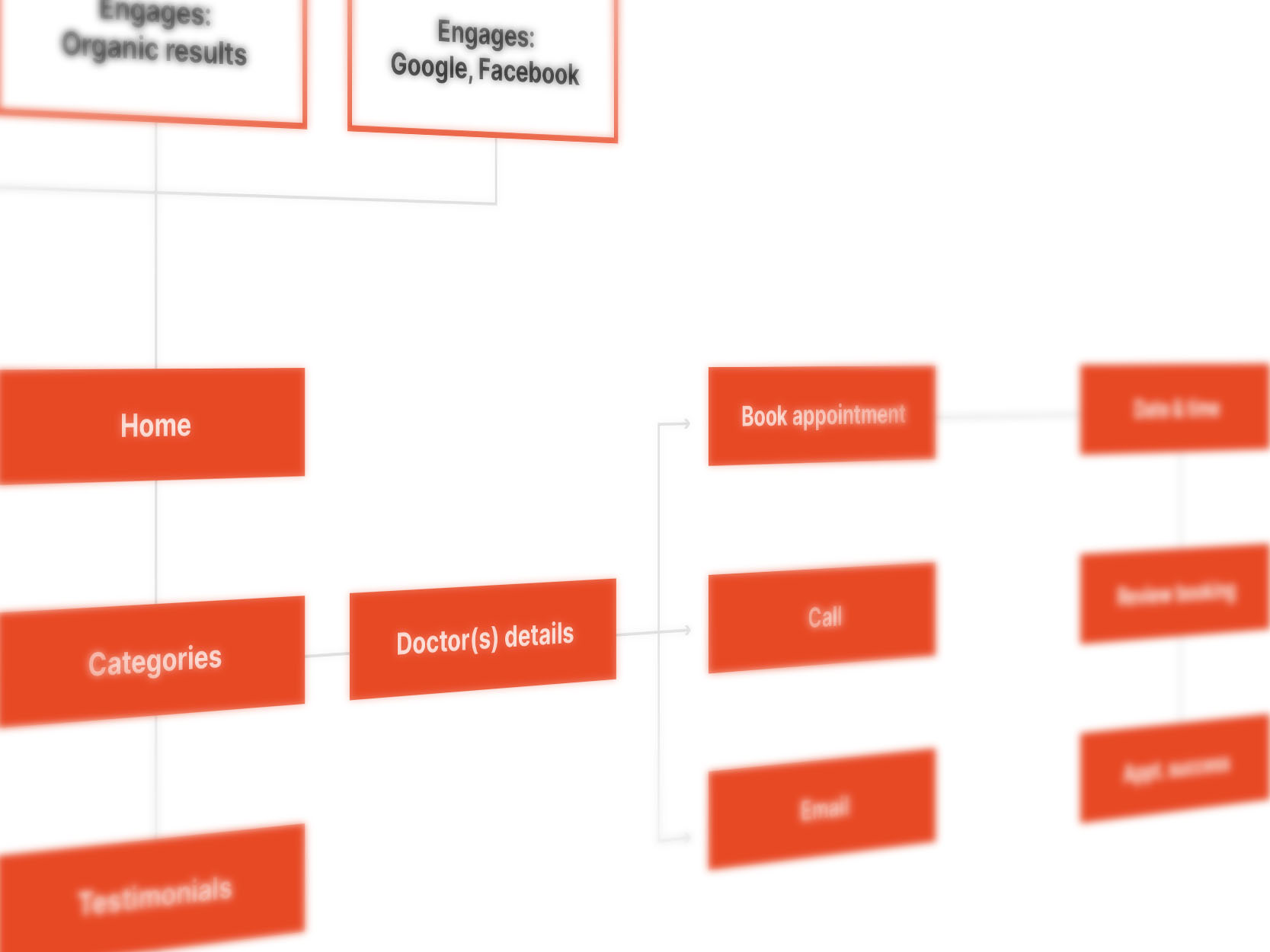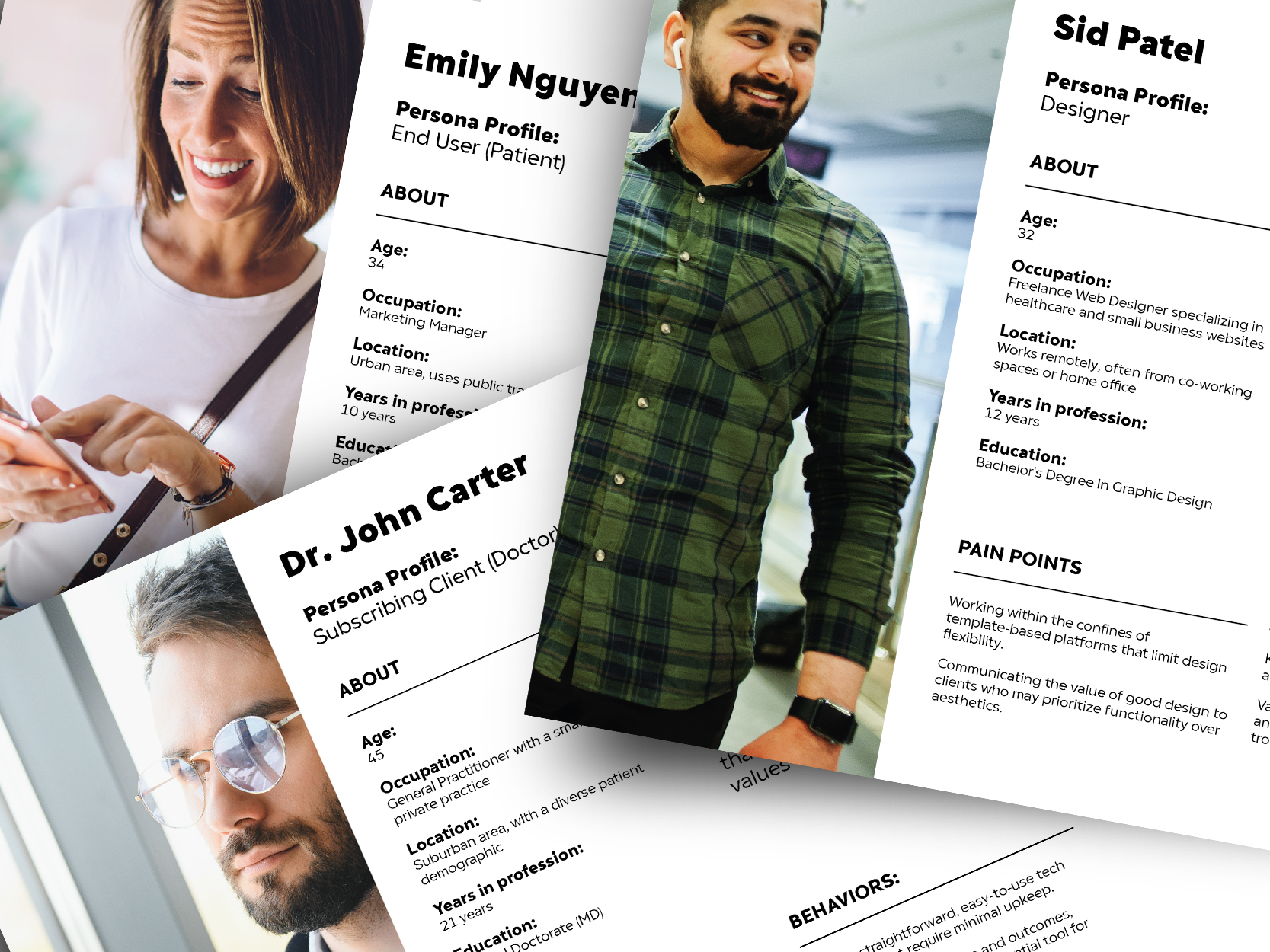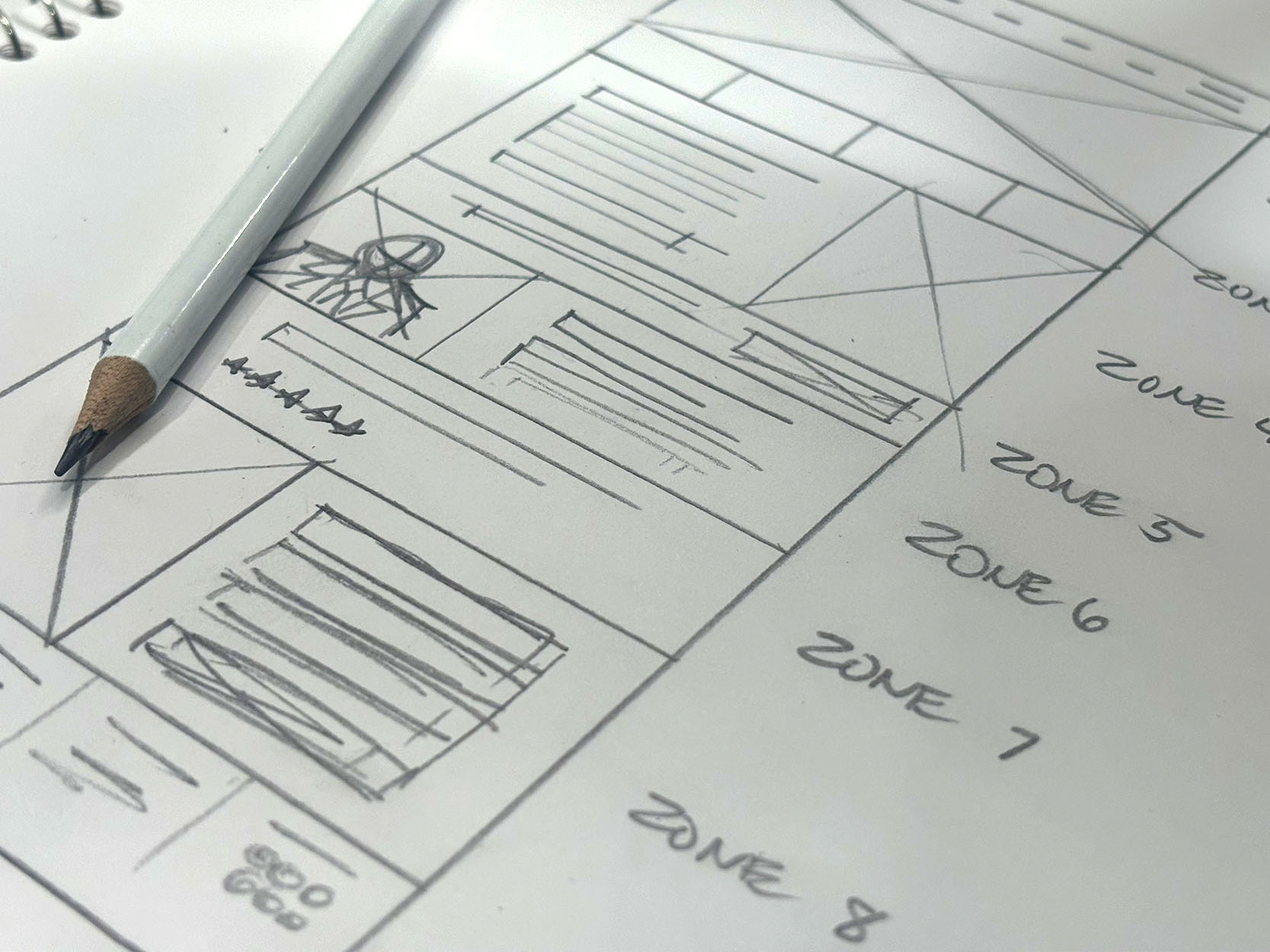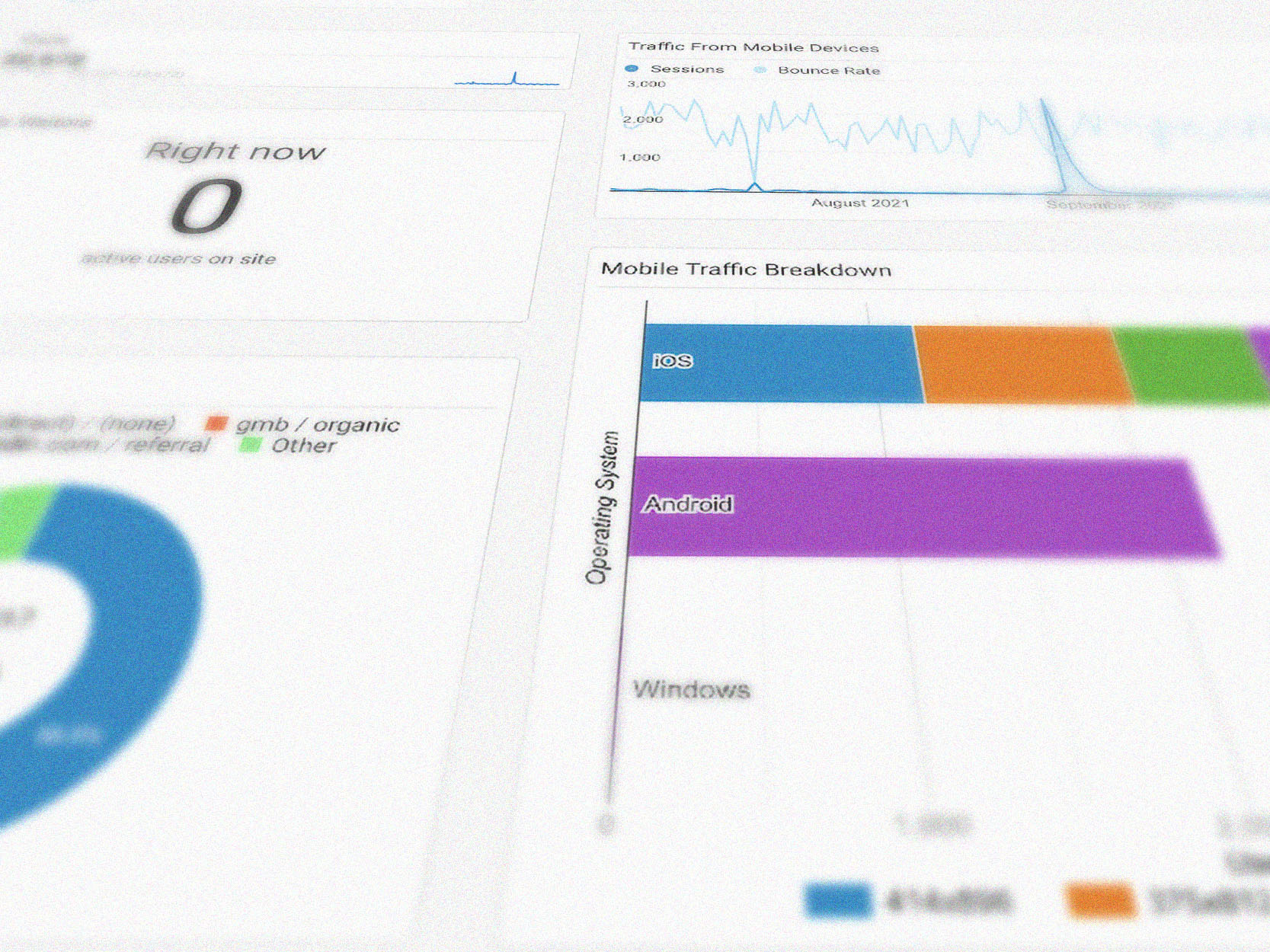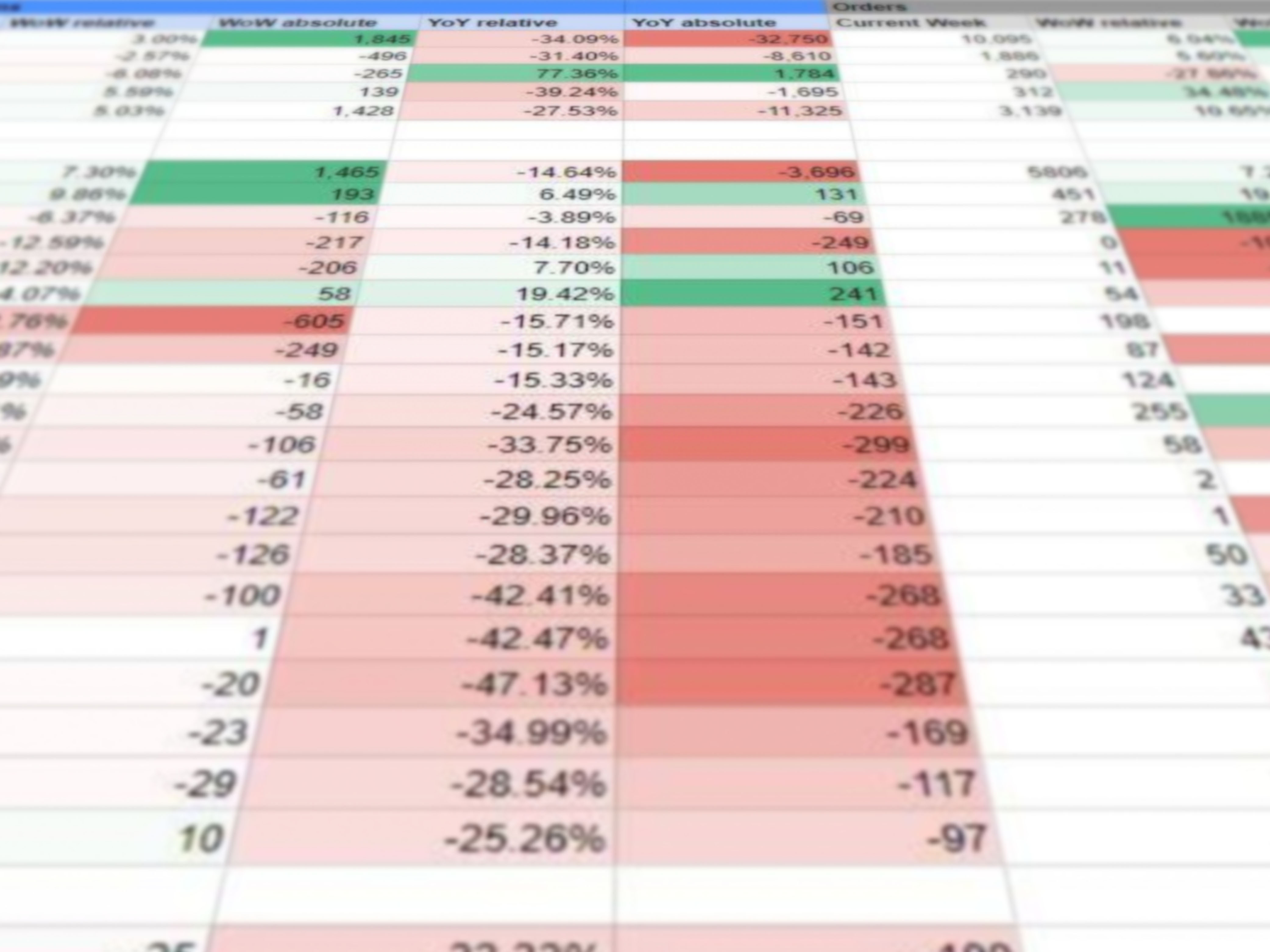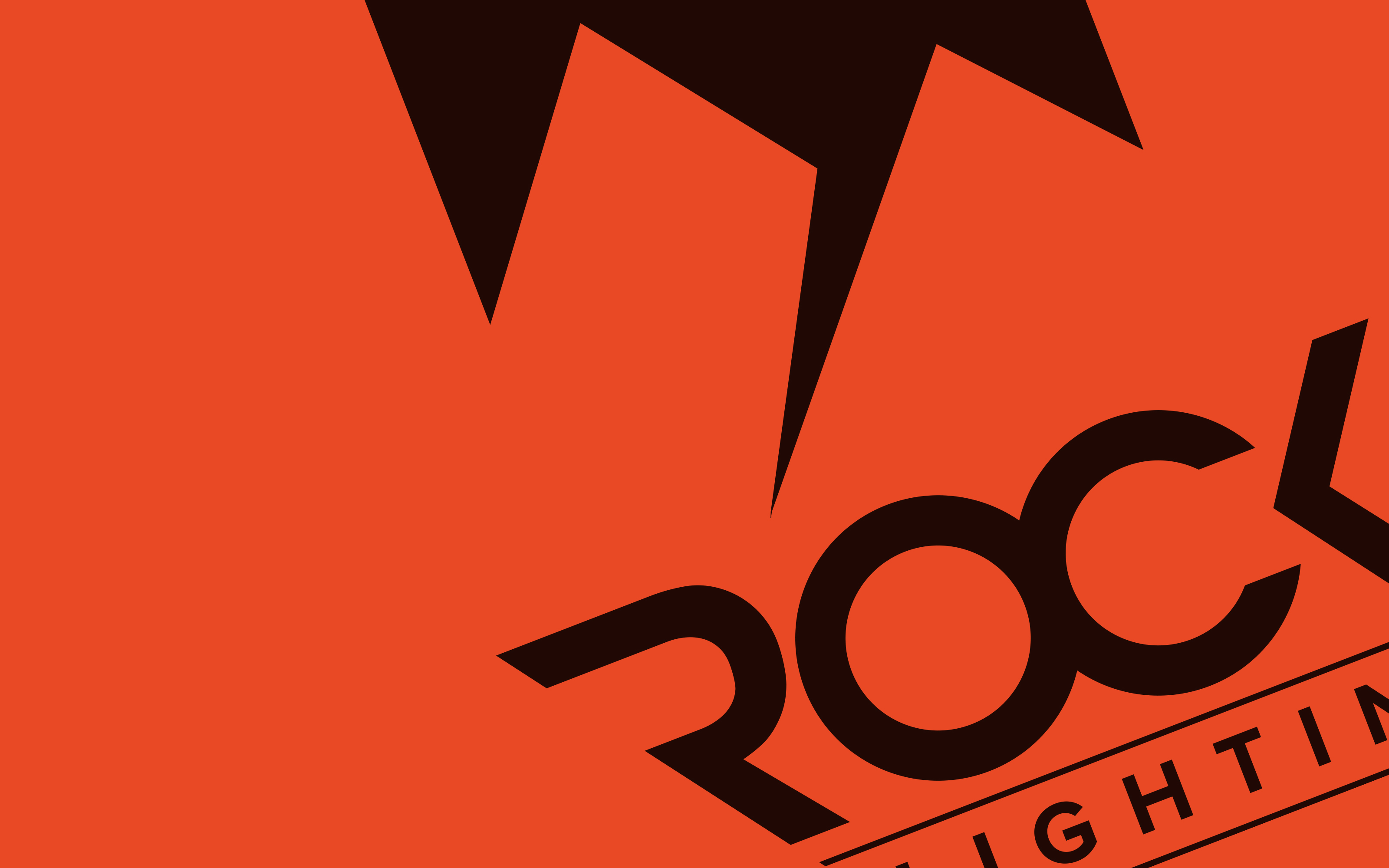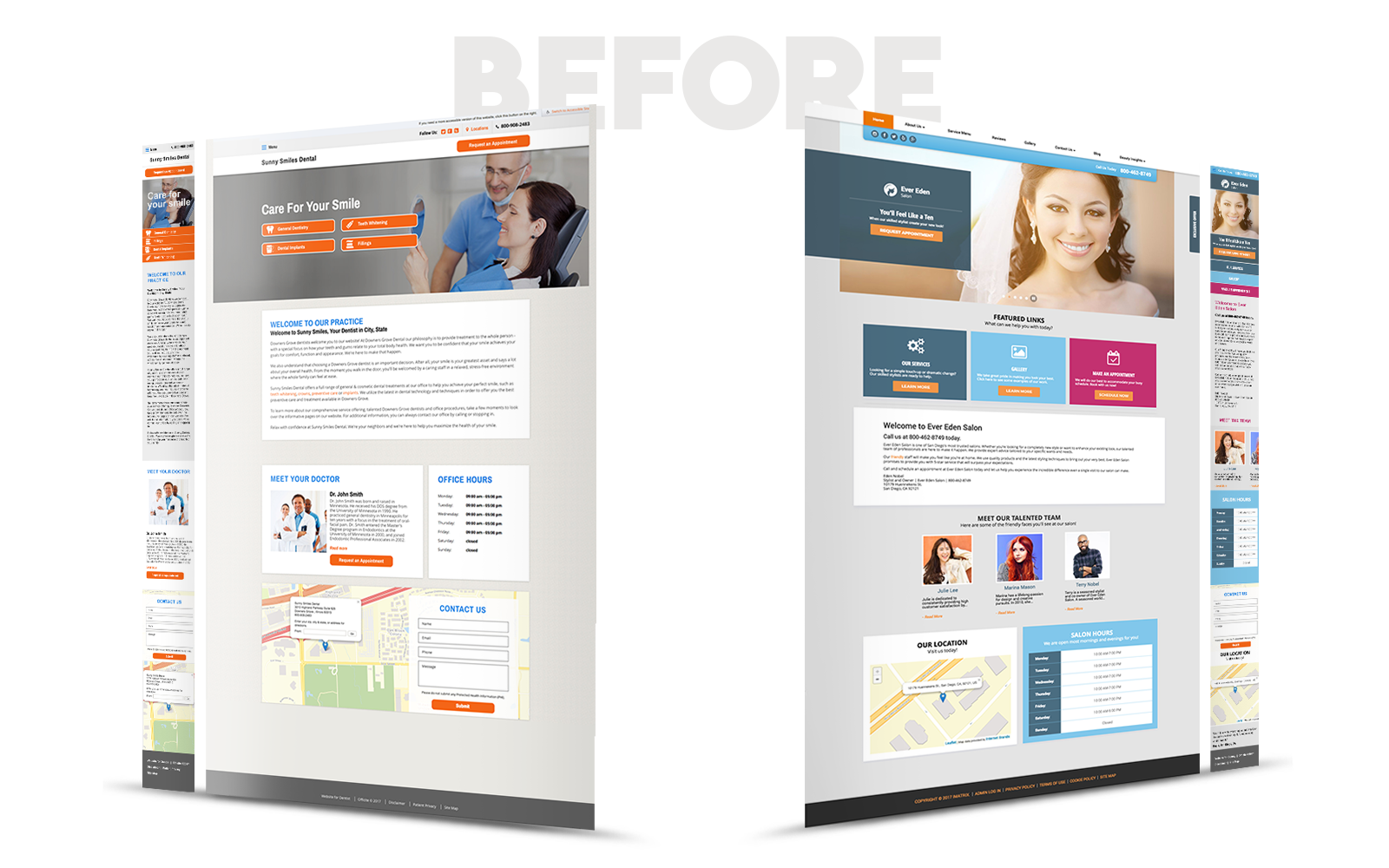
Background brief
In 2016, Officite's websites designed for health, legal, and beauty sectors faced navigation challenges, affecting end-users like patients and clients. These difficulties compromised users' ability to achieve their goals, diminishing overall satisfaction. Furthermore, even successful navigation didn’t fully meet user expectations, leaving a feeling of an incomplete experience.
Clients of Officite, including doctors' offices, beauty salons, and law firms, encountered issues with the platform's inability to meet their specific needs. Despite expectations of a user-friendly and seamless online presence from the SaaS product, the template-based design lacked the flexibility required for a dynamic online presence, failing to align with their unique branding and customer engagement goals.
The developers and designers tasked with creating these websites faced limitations due to the platform's rigidity and unintuitive nature. Despite their skills, the inflexible templates and the extensive training needed to use the platform efficiently hampered their ability to deliver high-quality, customized websites, ultimately affecting the quality of their work and operational efficiency.
Research objectives
End users: The research objective is to gain insight into their motivations, behaviors, and decision-making processes, identify their pain points and needs, and determine the factors that influence their conversion into patients, customers, or clients
Subscribing clients: The goal is to understand their expectations for the website service, how it aligns with their business objectives, and its effectiveness in enhancing their online presence and customer engagement.
For developers and designers: The focus is to explore their experiences with the platform's usability, the challenges in customizing templates to meet client needs, and their needs for resources or improvements to streamline the website development process.
Key findings
Summarization of the top three findings from research and analytics
Subscribing clients, particularly from well-established practices, reported a significant gap in customizing templates to reflect their brand or adopting a platform-provided brand that matched their ethos. This gap diminished their satisfaction, the perceived value of the service, and its effectiveness in attracting and retaining customers.
Substantial use of workarounds in the current system leads to inefficiency and dissatisfaction, hindering growth and scalability. Catering to a wide user demographic amplifies these challenges.
Developers and designers expressed dissatisfaction with the platform's rigid templates, which constrained their ability to implement creative and functional customizations, adversely affecting website quality. They highlighted an urgent need for better training, support, and advanced tools to improve their work efficiency and output quality.
Problem(s)
The primary issue with Officite's template-based platform is its failure to meet the varied needs of its users: end users struggle with navigation and relevant content, impacting decision-making; subscribing clients cannot adequately customize websites to reflect their brand or meet business objectives, affecting lead generation and customer retention; and developers and designers face limitations in customization and lack adequate support, hindering the quality of work. This misalignment between the platform's capabilities and user expectations calls for significant improvements in flexibility, support, and customization options to enhance user satisfaction across all groups.
Hypothesis
By focusing on key issues for each group—improving navigation and content relevance for end users, enhancing customization options for clients, and offering better support and tools for developers and designers—we expect to boost satisfaction, engagement, and conversions. This strategy aims to closely align the platform's features with user needs, thereby increasing the effectiveness and attractiveness of websites developed with Officite.
Design thinking
In our Design Thinking workshops, we brought together representatives from key user groups—end users, clients, and developers—alongside our product and strategy teams to tackle the platform's usability, customization, and support challenges. Through iterative cycles of iterate, test, and build, we aimed to improve navigation for end users, enhance customization for clients, and provide better support for developers. This collaborative effort led to innovative solutions that promise to make our platform more user-friendly, flexible, and supportive, setting the stage for improved satisfaction and engagement across all segments.
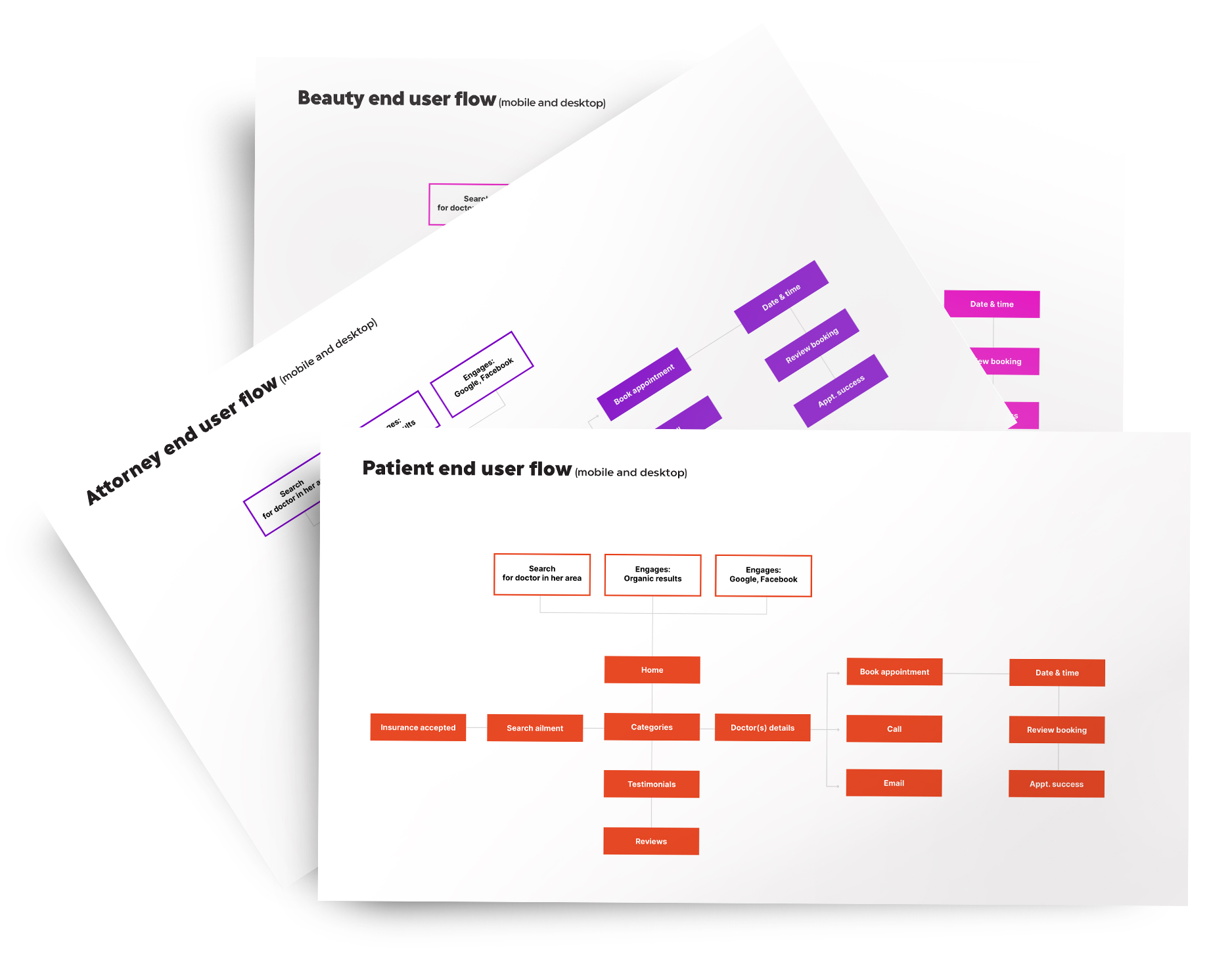
Key features
- Structure and zones
- Tones per sector
- Where is your pain module (Health)
- Accepted insurance (Health)
- Profile enriched (Health)
- Gallery (Beauty)
- Profile (All)
- Office hours (All)
- Discounts (All)
- Testimonial videos (all)
- Hero video (top tier) (all)
- SEO (top tier) (All)
- CMS (All)
- Mobile optimization (All)
- Advanced analytics and reporting (All)
- Seamless Integration 3rd party or API capabilities (All)
- Client feedback and satisfaction tracking (All)
Design principles
User-Centric Design Design with a focus on meeting the needs and enhancing the experiences of all users, ensuring the platform is intuitive and user-friendly .
Simplicity and Clarity Emphasize simplicity in design and operation, ensuring users can easily navigate and utilize the platform without unnecessary complexity.
Accessibility, Customization, and Personalization: Design solutions to be accessible and inclusive, catering to financial professionals with diverse needs and levels of accessibility. Incorporate customizable and personalized features that allow users to tailor their daily interactions with the applications to their specific preferences and requirements.
Solutions
What we did
In our session, we tackled the challenges faced by users of Officite's website platform, focusing on end users, clients, and developers/designers. We set research objectives to enhance user experience through improved navigation, customization, and support. Utilizing Design Thinking, we engaged stakeholders in workshops to brainstorm and refine solutions, leading to the development of key features designed to enhance usability, flexibility, and support.
By adhering to principles of user-centric design, flexibility, and simplicity, our aim was to upgrade the platform into a more intuitive and efficient tool, improving satisfaction and engagement for all user groups involved.
Results
What went well
User satisfaction
Increased customer satisfaction from 65% to 90%.
Revenue increase
The elite team was instrumental in driving the revenue of our website template product line to nearly double its previous figures.
Internal mindset change
The project's success and its impressive results have led to a paradigm shift in our approach to product development moving forward.
What didn't go well
Who are we building this for
Communicating to our SaaS members that our primary focus was on enhancing the end-user experience, rather than directly serving the members' immediate needs, proved to be a difficult concept for many sales individuals to grasp.
Scalability issues
In retrospect, focusing on refining our approach within a single sector before expanding would have allowed us to iron out issues more effectively before scaling up.
Scope challenges
Our project's ambitious scope led to inconsistencies and missed deadlines, underscoring the need for realistic scoping.
